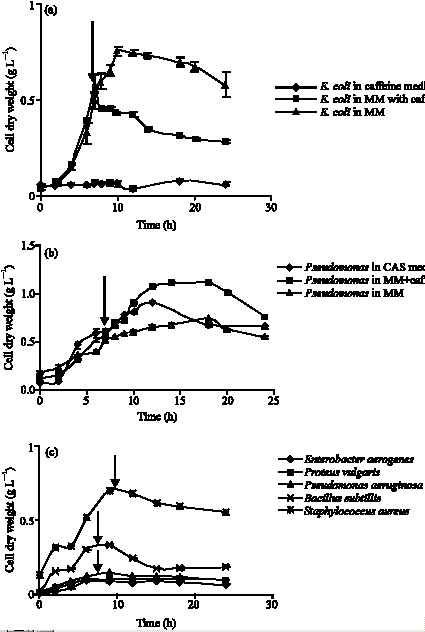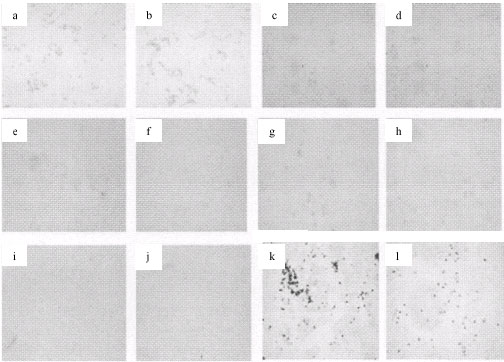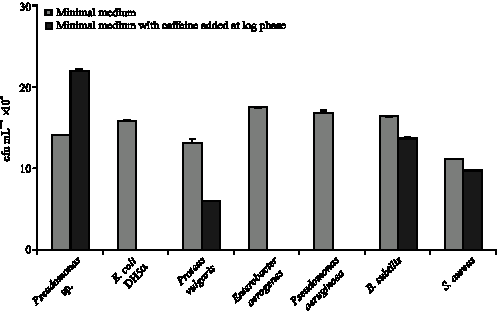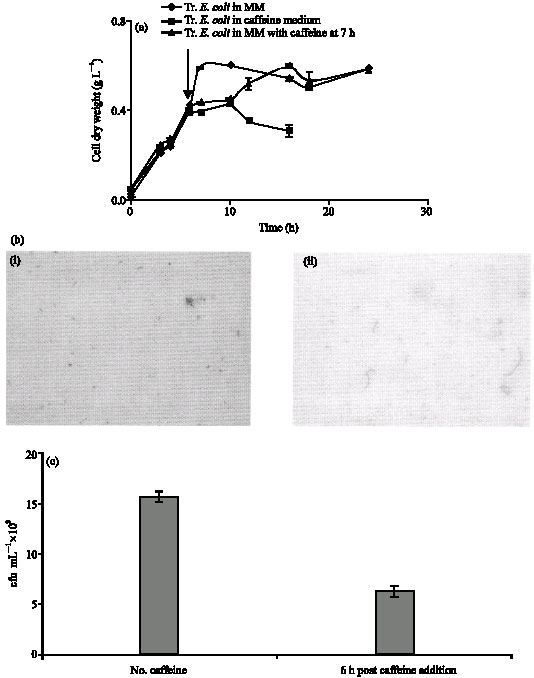Research Article
Inhibitory Effect of Caffeine on Growth of Various Bacterial Strains
Applied and Industrial Microbiology Laboratory, Department of Biotechnology, Indian Institute of Technology, Madras, Chennai, India
Sathyanarayana N. Gummadi
Applied and Industrial Microbiology Laboratory, Department of Biotechnology, Indian Institute of Technology, Madras, Chennai, India












